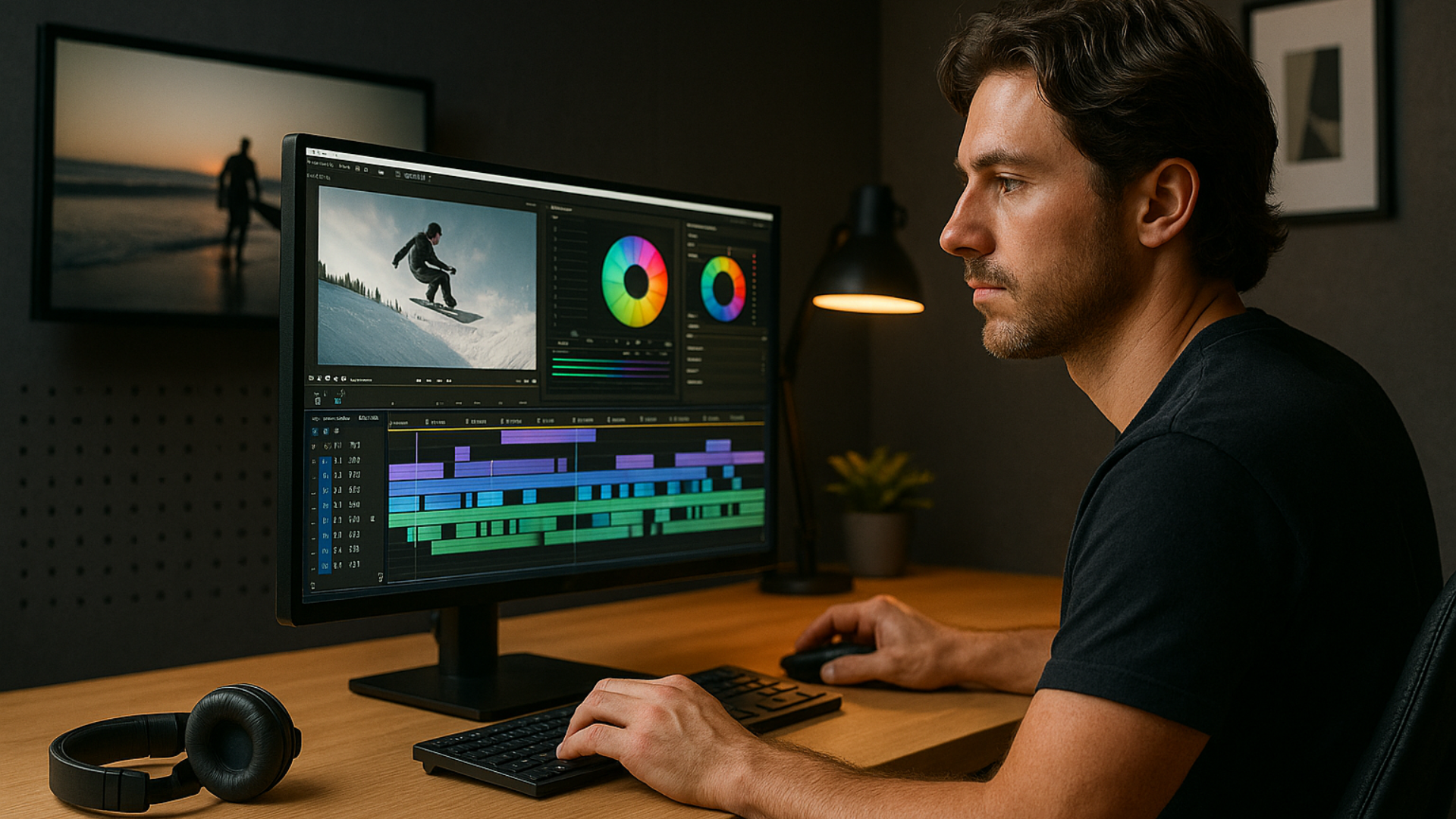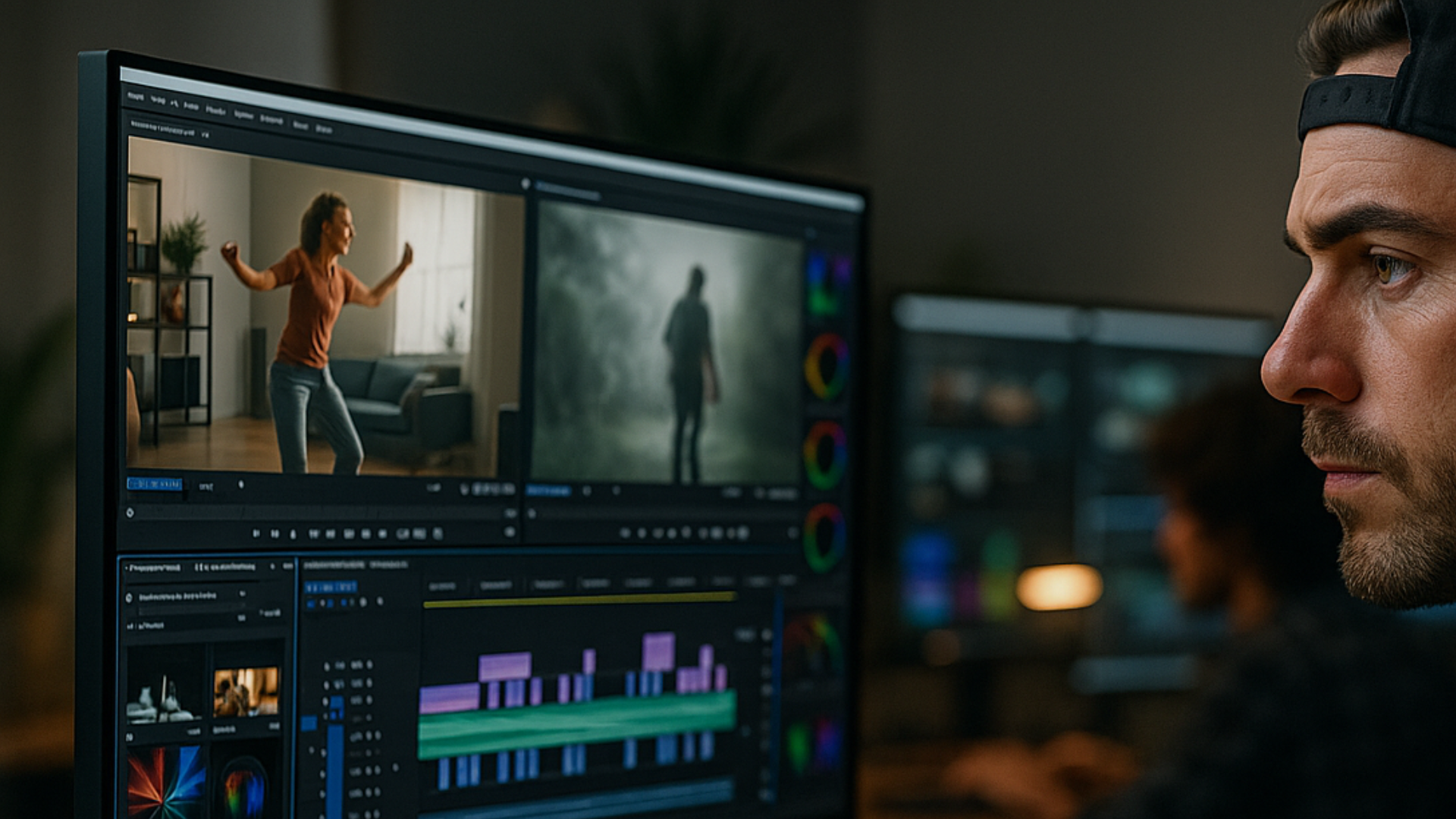How to Value Your Work as a Video Editor and Charge What You Deserve
If you’ve ever felt underpaid, unsure about how to price your services, or accepted jobs for far less than your work is worth, this post is for you.
Below, you’ll find a practical guide to help you value your work as an editor and charge fairly for your time, skill, and creativity.
1. Understand the True Value of Your Work
Why it matters:
Your editing doesn’t just “put videos together.” It turns raw material into visual storytelling that connects with the audience and generates real results — for brands, creators, and businesses.
Step-by-step:
-
List your skills and achievements – Include software, techniques, and successful projects.
-
Collect client feedback – Testimonials help show the value you’ve delivered.
-
Keep your portfolio updated – Showcase your best work and results.
-
Estimate the outcome you helped create – Did your video increase views, sales, or engagement?
The result:
You start recognizing and communicating your value with more clarity and confidence.
2. Research the Market and Set Your Pricing
Why it matters:
You can't charge fairly if you don't know what others in your field are charging. Rates vary by region, skill level, and scope of work, but you should have a clear idea of your worth.
Step-by-step:
-
Check what other editors charge – Look at platforms, portfolios, and local references.
-
Evaluate your experience level – More experience means more value delivered.
-
Calculate your costs – Include time, software, equipment, taxes, etc.
-
Create a rate table – Set minimums and ideal ranges for your services.
The result:
You stop guessing and start charging based on logic, not fear.
3. Offer Structured Service Packages
Why it matters:
Packages make it easier for clients to understand what they’re buying — and help you upsell services with more perceived value.
Step-by-step:
-
Identify your most frequent services – E.g., basic edit, advanced color, animation.
-
Bundle related services – Combine editing + color grading + sound design.
-
Set clear pricing per package – Be transparent about what's included.
-
Present it professionally – Use a clean PDF, site, or landing page.
The result:
You simplify the sales process and make your offer more appealing and professional.
4. Communicate Like a Professional
Why it matters:
Your tone, delivery, and clarity directly impact how clients perceive your value — and how much they’re willing to pay.
Step-by-step:
-
Use a professional email address – Avoid casual messaging for business.
-
Send structured proposals – Include deliverables, deadlines, and pricing.
-
Be confident during negotiations – Know your boundaries and stick to them.
-
Always use contracts – Protect yourself and your client.
The result:
You gain trust and authority — two key ingredients for charging higher rates.
5. Invest in Quality and Differentiation
Why it matters:
High-end results require high-end resources. When your work stands out in quality and style, clients are more willing to pay for it.
Step-by-step:
-
Keep learning – Invest in courses, tutorials, and masterclasses.
-
Use professional tools – Premium plugins, SFX, and transitions add real value.
-
Develop a recognizable editing style – Make your visuals distinct and cohesive.
-
Ask for feedback – Use criticism to refine your craft.
The result:
You build a reputation for quality — and quality commands a premium.
6. Negotiate with Confidence
Why it matters:
Every project is different, and negotiating is part of working professionally. But confidence comes from preparation.
Step-by-step:
-
Know your base pricing – Go into negotiations with a range in mind.
-
Understand client needs first – Ask before quoting.
-
Explain the value you bring – Don’t just list tasks — show impact.
-
Be ready to say no – Not every project is worth your time.
The result:
You protect your energy and time — and only take on work that pays off.
7. Use High-Quality Resources to Add Value
Why it matters:
Having the right resources (overlays, LUTs, SFX) saves time and boosts visual impact — helping you deliver higher-end results and justifying your rates.
Step-by-step:
-
Identify the tools that elevate your work – Think: visuals, sound, pacing.
-
Invest in pro-grade bundles – Get ready-to-use assets that save time.
-
Use them strategically – Add overlays, transitions, and textures with intent.
-
Show clients what makes your work different – Include before/after examples.
The result:
You deliver next-level edits that are easier to produce — and more impressive to watch.
Final Tip
Valuing your work isn’t about overcharging — it’s about charging with confidence, structure, and consistency.
You’re not just an “editor.” You’re a storyteller, a technician, and a creative partner. Price yourself like one.
Want a pro resource to elevate your visual game?
Check out the Overlays Essential Bundle
-
2000+ professional overlays and visual FX
-
Organized by style: transitions, film looks, visual effects
-
Works in Premiere, DaVinci, CapCut, and Final Cut
-
Includes LUTs, SFX, and tutorials
-
Built for editors who want premium results — fast
#valueyourwork #videopricingtips #freelanceeditorlife #creativepricing #chargewhatyoureworth #videoeditorrates #workflowforvideocreators #proeditingresources #visualassetsforvideo #professionalvideopack



